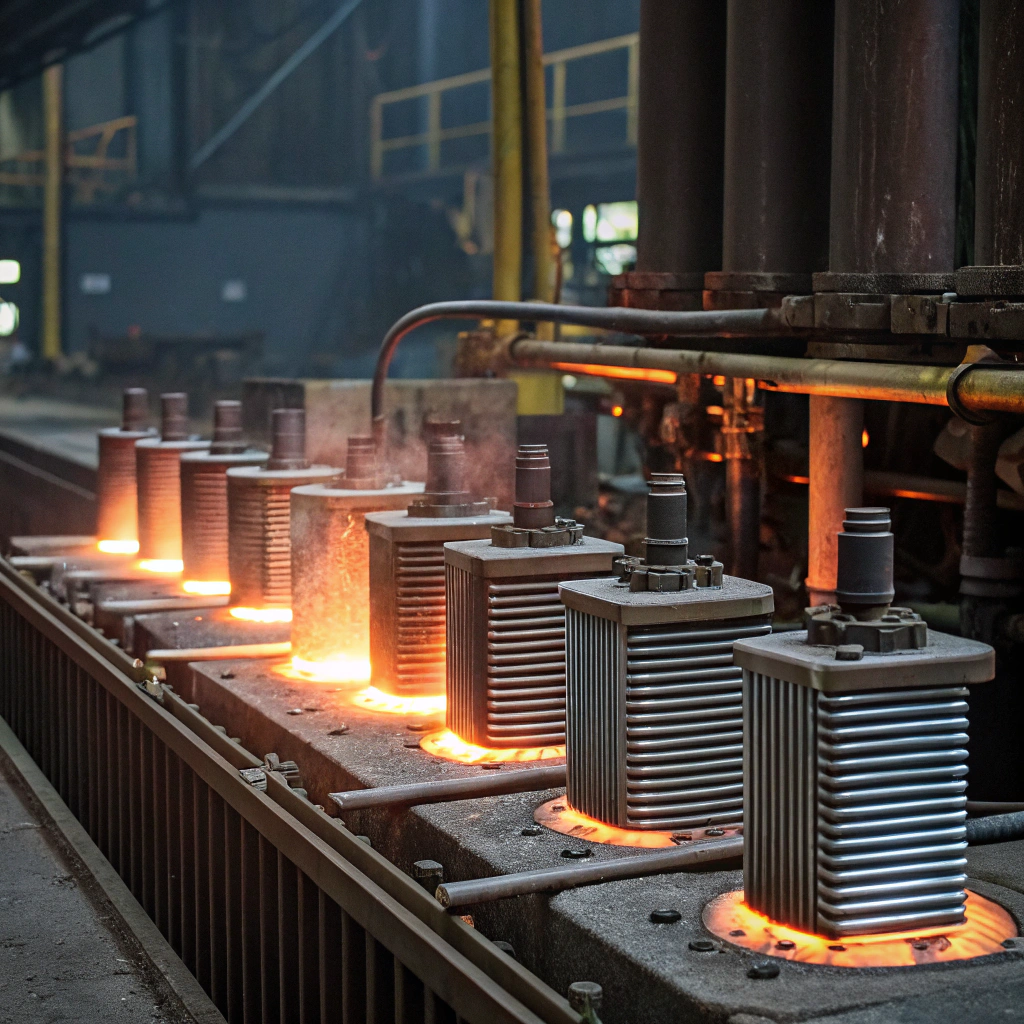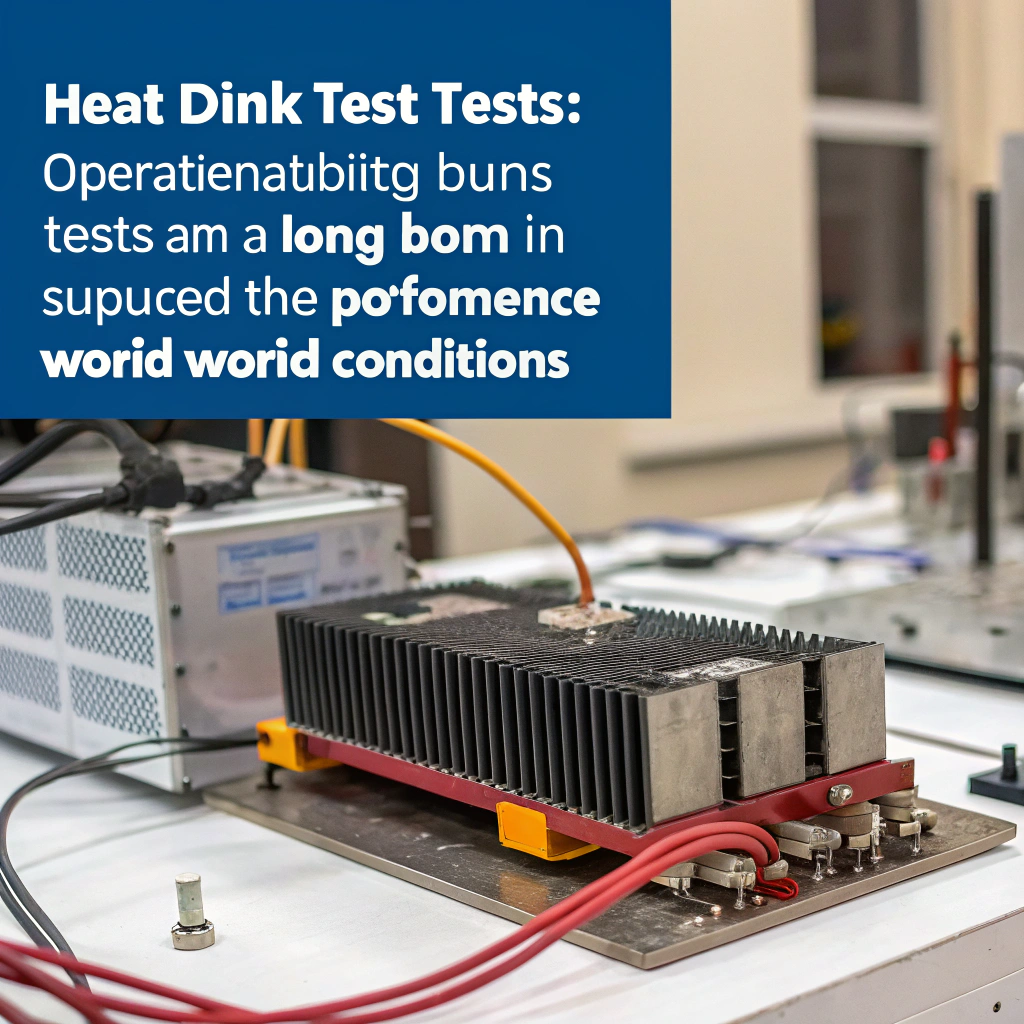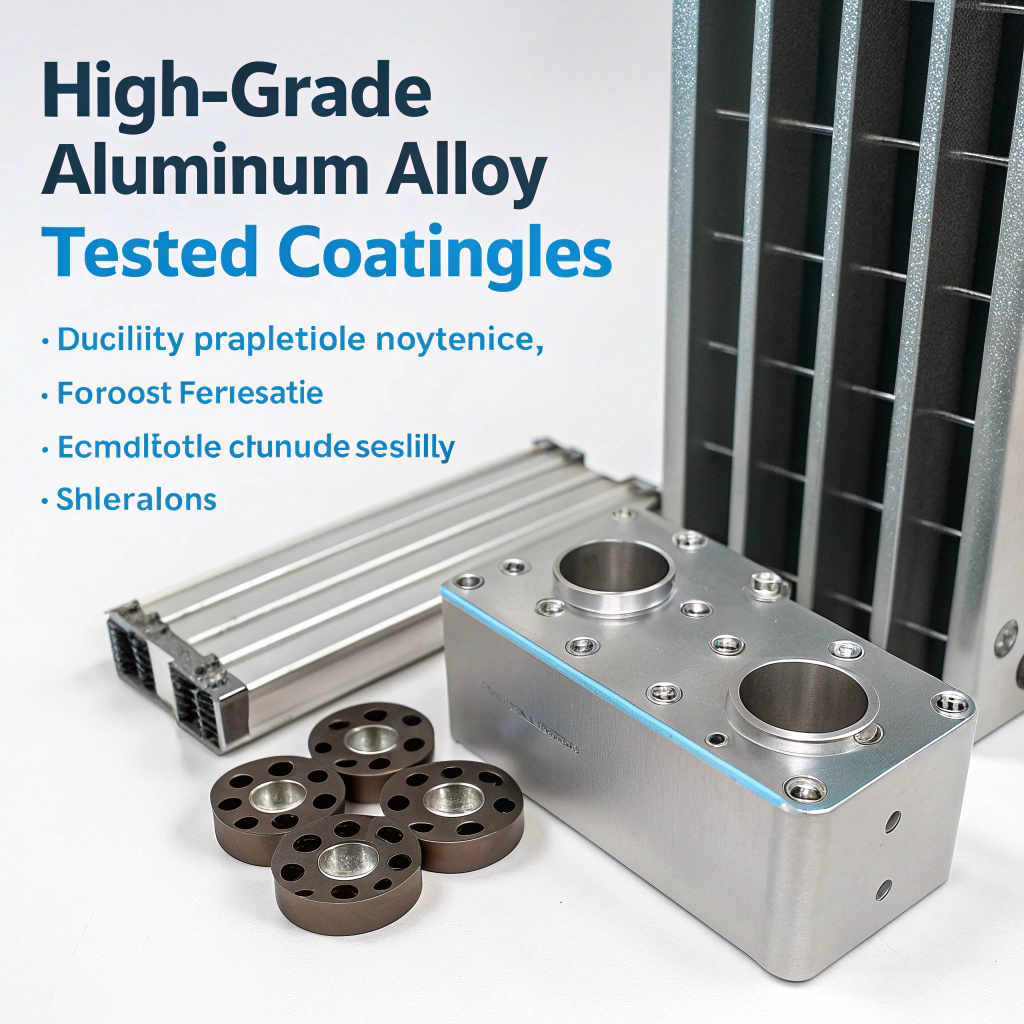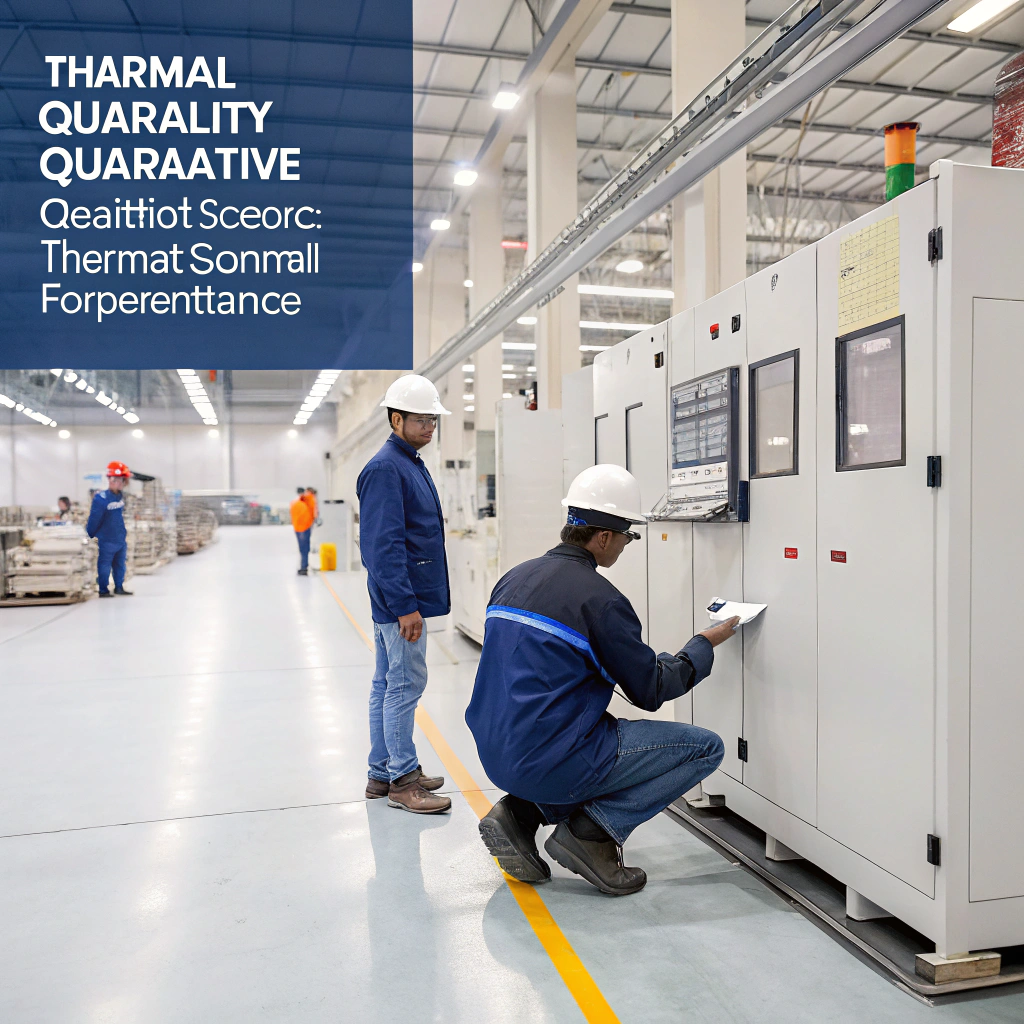Can Heat Sinks Withstand 24/7 Industrial Use Without Performance Loss?

Industrial systems don’t take breaks. Their thermal components can’t either. Heat sinks running 24/7 must survive heat, vibration, and years of stress.
Yes — our heat sinks are engineered for continuous industrial operation with guaranteed thermal stability, verified through thermal cycling and long-term durability testing.
If a single heat sink fails, the whole system might shut down. That’s why we focus on consistency, material resilience, and validated performance. Here’s how.
Can your heat sinks support 24/7 industrial operation?
Running nonstop means constant thermal stress. Some materials expand, deform, or wear out under this load.
Yes — we offer aluminum heat sinks designed for continuous use, supported by robust materials, thermal margins, and real-world operational testing.

We design for:
- Steady-state thermal load: Even at peak power.
- Mechanical stability: No fatigue under repeated thermal cycles.
- Margin of safety: Our designs allow extra thermal headroom.
- Passive and forced-air options: To suit static or high-power systems.
In past industrial cases, including power inverters and telecom base stations, our heat sinks have run for 5+ years with no performance drift.
Our heat sinks can run 24 hours a day, every day, under industrial loads.Tõsi
We engineer our designs for continuous duty cycles using robust materials and design margins.
Heat sinks must be shut down regularly to prevent failure.Vale
Properly designed heat sinks do not require shutdown and are rated for nonstop operation.
What tests ensure heat sink durability over time?
Longevity isn’t guesswork — it’s verified. Heat sinks must survive vibration, moisture, temperature swings, and time.
We use thermal cycling, salt spray, UV exposure, and operational burn-in tests to ensure long-term heat sink performance under real-world conditions.

Table: Key Heat Sink Durability Tests
| Katse tüüp | What It Verifies | Märkused |
|---|---|---|
| Thermal Cycling | Resists expansion/contraction fatigue | 1,000+ cycles, e.g. −40°C to 100°C |
| Soolasprei | Corrosion resistance in humid environments | ASTM B117 compliant |
| UV-kiirgus | Coating stability outdoors | Includes sunlight, ozone, and smog |
| Burn-in Operation | Long-term stability under load | 500–1,000 hours under real thermal loads |
| Termiline šokk | No cracking after rapid temperature change | Confirms material bonding strength |
| Interface Degradation | Stability of grease/pads | Measured TIM performance post-cycling |
| Vibration | Mechanical stability in active machines | Tested to IEC/ISO standards |
We often combine these in sequence — for example, cycle heat and humidity, then test resistance.
We also test thermal resistance (Rθ) after each stress cycle to ensure that heat transfer is still effective.
Our heat sinks go through corrosion, vibration, and thermal shock testing.Tõsi
We run multiple stress tests to ensure durability across conditions.
We only test heat sinks under ideal lab temperatures.Vale
We simulate real-world conditions like high humidity, rapid heat swings, and mechanical stress.
Are materials suitable for long-term heat cycling?
Heat sinks expand and contract every time they heat up or cool down. Weak materials fail quickly.
Yes — we use high-grade aluminum alloys, tested coatings, and compatible thermal interfaces that remain stable across thousands of thermal cycles.
Materials We Use
- Aluminum 6063-T5: Great thermal performance and corrosion resistance.
- Alumiinium 6061-T6: Higher mechanical strength, good fatigue resistance.
- Anodized surface: For corrosion and UV protection.
What Makes Materials "Cycling-Proof"?
- Low creep: Material won’t deform under long-term thermal load.
- Good thermal conductivity: Maintains cooling rate.
- CTE matching: Reduces cracking from expansion differences.
- Stable coatings: No peeling, fading, or conductivity loss.
- Interface retention: TIMs (greases, pads) stay intact through cycles.
We avoid materials prone to oxidation or fatigue. Alloys are chosen based on load, temperature range, and vibration levels.
Table: Heat Sink Material Features
| Kinnisvara | Nõue | Our Solution |
|---|---|---|
| Soojusjuhtivus | >150 W/m·K | 6063/6061 aluminum |
| Expansion Compatibility | Minimal mismatch with base systems | CTE-matched design |
| Korrosioonikindlus | 5+ years outdoor protection | Hard anodized surfaces |
| Coating Durability | No UV or salt damage | Anodizing + optional powder coating |
| Väsimuskindlus | 10,000+ cycles | Certified fatigue testing |
Anodized aluminum heat sinks handle thousands of heating/cooling cycles.Tõsi
Anodized aluminum offers both conductivity and structural resilience across many cycles.
Plastic fins are better than metal for long-term thermal use.Vale
Plastic lacks conductivity and often fails under industrial thermal stress.
Do you offer heat sinks for mission-critical systems?
For some applications — failure is not an option. Think aerospace, data centers, or medical devices.
Yes — we offer high-reliability heat sinks for mission-critical systems with validated thermal stability and strict quality control.

Here’s how we meet the standard:
- Tight QA: ISO-certified, batch-level traceability.
- Redundancy: Designed with thermal margins and safety factors.
- Thermal Validation: Lab-tested thermal resistance per part number.
- Keskkonnatolerantsus: Salt, UV, shock, and pressure tested.
- Dokumentatsioon: Complete with material certs and thermal reports.
Applications We Serve
| Tööstus | Kasutusjuhtum |
|---|---|
| Lennundus | Avionics cooling, satellite boards |
| Meditsiiniseadmed | Imaging, diagnostics |
| Telekommunikatsioon | 5G base stations, servers |
| Power Systems | Inverter and UPS cooling |
| Defense | Radar and mission computers |
For these, we also offer embedded sensor-ready designs, letting you monitor temperature in real-time to catch any drift or warning signs early.
We offer certified heat sinks for aerospace and mission-critical devices.Tõsi
Our high-reliability products serve medical, defense, and energy markets.
Mission-critical systems avoid metal heat sinks because of weight.Vale
Aluminum offers an ideal strength-to-weight ratio and is widely used in aerospace.
How do you guarantee consistent thermal performance?
Even small performance drops can ruin uptime. We ensure each unit meets or exceeds specs, every time.
We guarantee consistent thermal performance through strict QA, calibrated testing, redundant safety margins, and optional sensor integration.
1. Quality Control
- Fin spacing, coating thickness, and alloy verified in each batch.
- Surface flatness for proper TIM contact.
- Reject parts outside thermal resistance tolerance.
2. Batch Testing
- We measure RθJA (junction-to-ambient resistance) across samples.
- Calibrate against reference “golden unit” heat sinks.
- Retest units from long storage to ensure no drift.
3. Performance Margins
- Rated for 10–20% above expected load.
- Maintains performance even if TIM degrades slightly.
4. Sensor Compatibility
- Some designs allow for thermal sensors.
- You can monitor performance in real time.
Table: Thermal Consistency Features
| Funktsioon | Eesmärk |
|---|---|
| Calibrated Test Setup | Ensures each part matches thermal targets |
| Material Certification | Confirms alloy purity and conductivity |
| TIM Compatibility | Works with top greases/pads |
| Safety Margin | Operates 10–20% below max temp |
| Long-Term Drift Testing | Detects any performance decay |
We monitor and test each heat sink for thermal consistency before shipping.Tõsi
Quality control ensures thermal resistance and mechanical specs are met.
Our heat sinks are not tested after manufacturing.Vale
We perform rigorous batch and reference testing on every lot.
Kokkuvõte
Not all heat sinks are built for 24/7 use. Ours are. With strong materials, verified testing, and mission-grade quality control, we keep your systems cool — nonstop.



